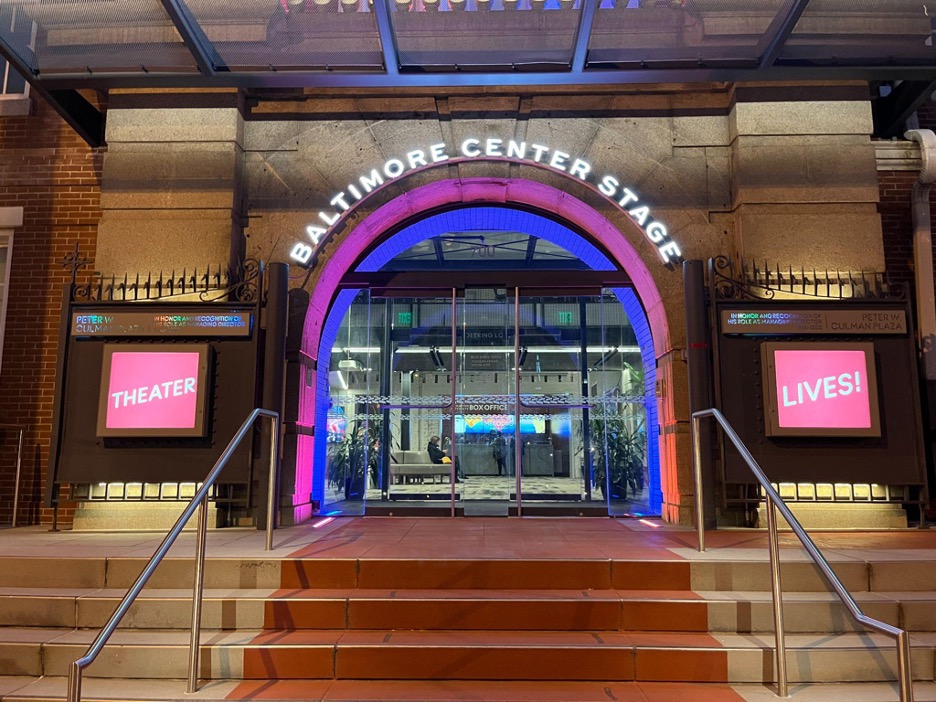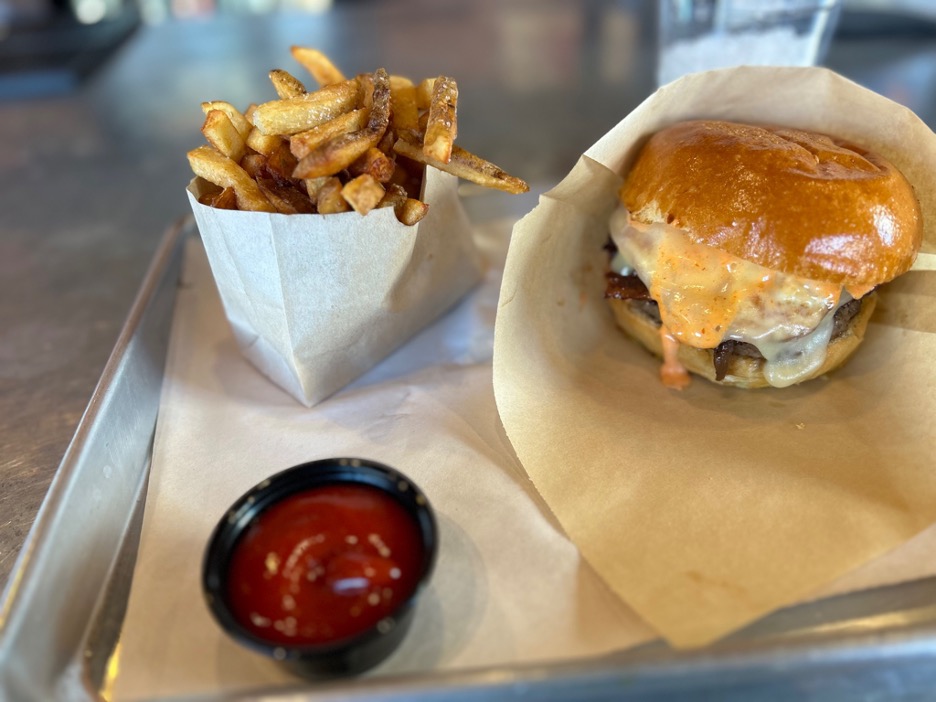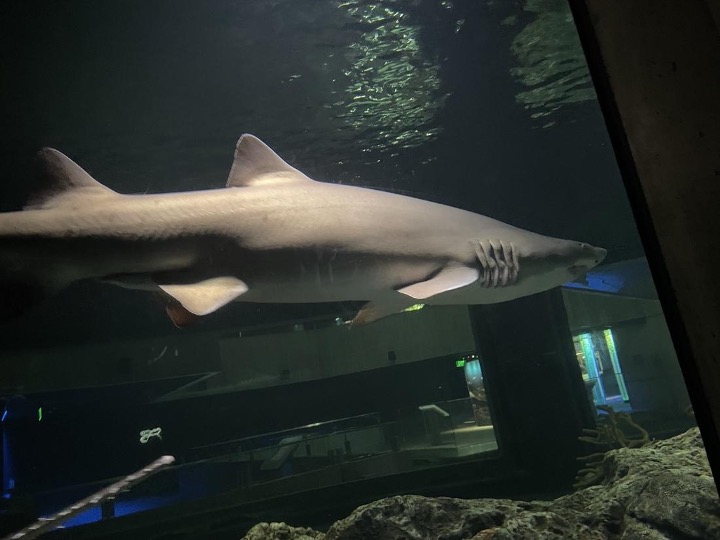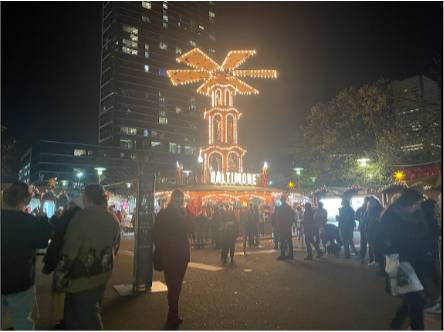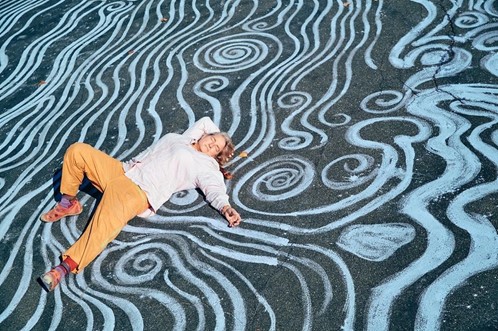
She boated to the middle of a lake to install man-made floating wetlands for her project called Common Waters in Austin, Texas. For her Cornerstones project, she carved replicas of tiny plant structures into walkways of Seattle. Eco-artist Stacy Levy’s work is often focused on both sustainability and education, and she wants to inspire you to think deeply about the Earth’s intricate systems.
After visiting Loyola in late September, Levy plans to return in the spring to work with students on a unique climate-related public art piece in connection with the 2025 Humanities Symposium text, “The Great Derangement: Climate Change and the Unthinkable” by Amitav Ghosh.
Levy is internationally recognized for her work in landscape art and architecture. She takes the inner workings of hidden natural systems and transforms them into educational public art installations. She is known for her ability to combine visually pleasing aesthetics with environmental science.
She said the world around her inspires her work and provides her with a unique perspective.
“I feel much more at home in walking across the sidewalk or walking through a forest if I have a sense of how it’s working, what its system is, and where I fit in or don’t fit in. And that kind of comfort and connection, I think, is something that’s missing from a lot of people’s lives and missing from my life too much of the time,” Levy said.
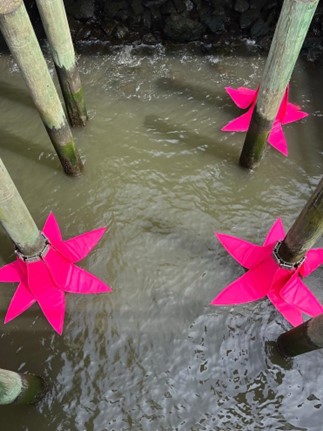
Some of Levy’s most famous works include “Tide Flowers,” 2022, and “Missing Waters,” 2020.
“Tide Flowers” was a massive water installation in Brooklyn, New York. Large pink flower petals that bloom and close as the tide shifts were installed on the East River at Domino Park. The installation is likely her most recognizable tide-based piece. Levy holds a special interest in tides.
“I find the urban tide is super compelling because it’s a whole timekeeper that is happening while we’re inhabiting the city, and the tide is inhabiting the city too. And it’s keeping a completely different clock,” Levy said.
Levy’s “Missing Waters” was a 2020 art installation commissioned in New York’s Flushing Bay, where lush wetlands used to inhabit. Today the area is paved, completely erasing the history of the ecosystem it used to hold. “Missing Waters” is an emotional piece reflecting the memory of the wetland, using beautiful chalk depictions of hydrological patterns. Levy reflects on these losses.
“When these spaces get taken away from you, they get taken away in all sorts of ways- like all the species that used to be- they get taken away. Your ability to walk through it’s taken away, and it looks like just everything else. It’s a big loss,” said Levy.
To reconnect with the natural world, Levy encourages students to get in touch with the nature right at their fingertips:
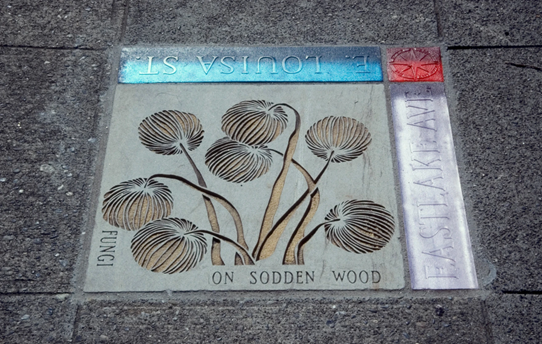
“They can walk their own watersheds- figure out they can start somewhere and take a map and see if they can actually walk down the creek as it’s heading, say, into the Chesapeake Bay. And what do they find along the way? It’s very informative,” said Levy.
With her ongoing work, Levy continues to remind us of the intricate relationships between humans and the environment, pushing the boundaries of how ecology, art, architecture, and sustainability can intersect.
For more information, students can contact Julio Fine Arts Gallery Director Megan D. Rook-Koepsel: mrook-koepsel@loyola.edu. The Julio Fine Arts Gallery is open all week. Additional information on the gallery’s hours is available at julioartgallery.com. For more information on Stacy Levy’s work, visit stacylevy.com.







































































































